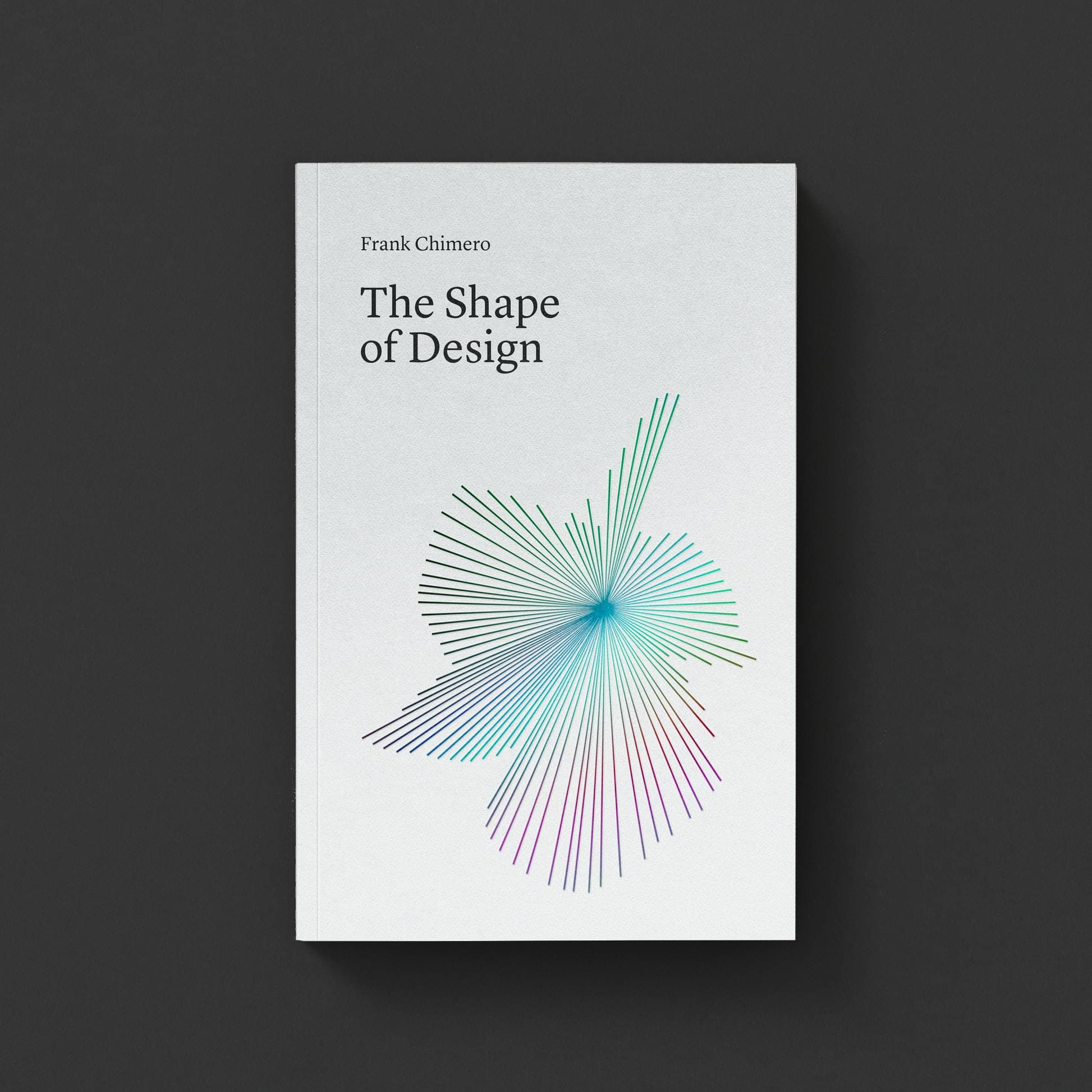Rules of Engagement
We used to have audiences, but the information age has transformed them into users who are no longer satisfied with the passive consumption of content. They desire interactions and opportunities to connect and contribute. Designers are placed in a position to plan and produce the systems, platforms, frameworks, events and artifacts that work as a conduit to facilitate these interactions and experiences.
Unfortunately, there’s little information to cite about what works and what does not in these sorts of endeavors. We’re left looking in the periphery for wisdom about the process, trying to find patterns in other realms that can be mapped into this new space.
The best way to gain a bit of insight is to consider the best, most social, interactive work designers are producing as frameworks for improvisation. To develop a vocabulary, frame the process, label characteristics and potentially predict success, we can cite the wisdom of the other arts that use improvisation as a cornerstone: areas such as jazz and improvisational theater. From this, we can begin to dictate best practices.
Limitations
Every game needs rules, and every successful framework for improvisation has limitations. These limitations can be internal to let the creative get to work, but can also manifest outward to act as rules of engagement for contributors and participants.
Limitations can be useful to help a creator or contributor begin working in a general direction, then, use the feedback of the process to steer their decision making. This is how improv theater works. Most sketches begin with a prompt, then the actors let the momentum of the narrative snowball by working off of the limitation of the prompt and any rules the improv game may have.
The utility of restraints is that they give the participants common-footing, which allows them to get started. Motivation doesn’t disappear, it evaporates, and this seems crucial when a designer is either trying to get to work, or is working to ensure their users remain engaged. One strategy is to create a purposeful set of limitations I like to call a “pseudo-structure.” Pseudo-structures act as a framework for creative activity and improvisation. Limitations are the playground of a creative mind. They are a latticework on which to hang ideas.
Many of the greats used pseudo-structures when working. Vivaldi wrote four violin concertos: one for each season. Shakespeare’s sonnets follow a specific rhyming scheme and are always 14 lines. During Picasso’s blue period, he essentially only painted monochromatically. There are also ample examples of limitations being used to frame user’s contributions, such as Twitter’s character limit on posts or the formulaic approach to creating a proper LOLCat. (Oh hai.) Miranda July and Harrell Fletcher’s Learning to Love You More is a project made of a series of pseudo-structures that asks contributors to complete the task, document the results, then submit them to share online.
The restrictions of a pseudo-structure can take many shapes. They can be conceptual, where the restrictions determine the subject matter of the work. (See Vivaldi’s concertos or any illustrated Alphabet book.) Limitations can also be structural, where compositional restrictions are created. (Such as Shakespeare’s sonnets, Twitter’s character limit, or choreographing a dance where the dancer doesn’t step outside of a specific space.)
When choosing limitations, the designer needs to be careful to not make them too—well—limiting. The idea is to use the pseudo-structures to promote activity, not suppress it. When done correctly, limitations can be used as a tool to overcome the gap between finding the desire to do something and knowing where to put one’s efforts. A good limitation makes the contributor feel like they are already halfway done: all that is left to do is to sort out the details and execute their idea.
Acceptance and Ambiguity
One of the core beliefs of improv theater is the idea of “Yes, and…” meaning that each step in an improvisational process is accepting previous contributions and is additive in nature. Improvisation is more akin to building with clay than sculpting out of marble: things are added and attached rather than excess being carved away. The process is not freeing people out of blocks of marble, it is building something out of nothing. Rejection squelches unforeseen possibilities in the interaction and cripples participants’ desire to contribute. Frameworks for improvisation must remain positive and accepting.
The challenge (and potentially the art) of creating these frameworks is balancing the inherent incongruency of some ideas that comes with setting limitations versus trying to create an atmosphere of acceptance that maximizes potential. The art is having participants understand that anything goes, but not everything.
Creating these frameworks and building them on the idea of acceptance means that there will always be an element of ambiguity in the results. But, designers and users will become more and more accustomed to ambiguity as more of these platforms are built, because their utility will not be obvious. As the format of contribution proliferates through more of what designers make, more new, powerful tools, devices, sites and ways to interact will not have a clear value proposition. They can’t say “this is important because it lets you do this” or “this is the specific reason this thing exists.”
Ambiguity begins to explain why Twitter is different from Facebook. The value proposition of Facebook is clear: stay in contact with friends and share with them. But, what’s the use of Twitter? No one can say definitively, because there is no right way to use it. For some, it’s a news feed, for others, it’s a way to communicate with friends, and for others, it’s a way to keep in contact with brands.
It’s why Twitter fascinates some and beguiles others. Twitter can’t craft a clear value proposition on their homepage to say what the site is for, and if you are someone who needs convincing, that’s frustrating, because everyone is talking about the site. If you are observant, Twitter’s popularity in spite of its utility ambiguity is a sign that something big is happening on a larger scale. We are no longer building hammers with one specific use, or even a swiss army knife that can do many different things. What we are building is more akin to two pieces of stone, from which someone can make their own tool for their own specific uses: arrowhead or hand axe. The most flexible frameworks for improvisation will not only have improvised content, but also improvised utility. Often times, the utility is the interaction.
Lessons from Jazz
The predominant cultural example of an improvisational creative endeavor is jazz. Learning about the history of the music and listening to musicians talk about jazz, one will hear things that can make these frameworks make more sense. Jazz is about improvising, and it’s about having the musicians and audience meet the music halfway. Jazz is a platform and a cultural vessel. And it’s incredibly difficult to summarize in words without seeming hyperbolic. It’s value is soft, but we some how perceive it to have value despite it’s ambiguity.
Design seems to be the same way. It is about improvising (we can’t boil it down to a hard set of rules to follow). It’s about meeting messages at a halfway point where the creators and users overlap. Design is a platform and cultural vessel prone to hyperbole. And it has a soft value that is often difficult for outsiders to discern.
The primary trait of both jazz and improvisation is process. To truly partake in it, you have to visit a place to see it in progress. Every jazz club or improv comedy theater is a temple to the process of production. It’s a factory, and the art is more the assembly than the product. One could say jazz is more verb than noun.
That makes me think that the most successful of these improvisational frameworks we create should be verb-based, and focus on creating meaningful experiences, interactions and connections. We’ll use nouns and artifacts to act as facilitators, but the real point of the exercise is the experience.
Designed frameworks can be platforms for experiences. As our skills in making them mature, the basic trait for platforms will be interaction and the basic need of its contributors will be connection. The success of a framework will be measured in enthusiasm. But, it should be said that platforms and their frameworks are not a destination, but an environment: less a sandcastle and more a sandbox. It has been frequently noted that the tools of our trade have been democratized and everyone can access them. If we’ve all a shovel and a pail, the sandboxes we build become incredibly important.







